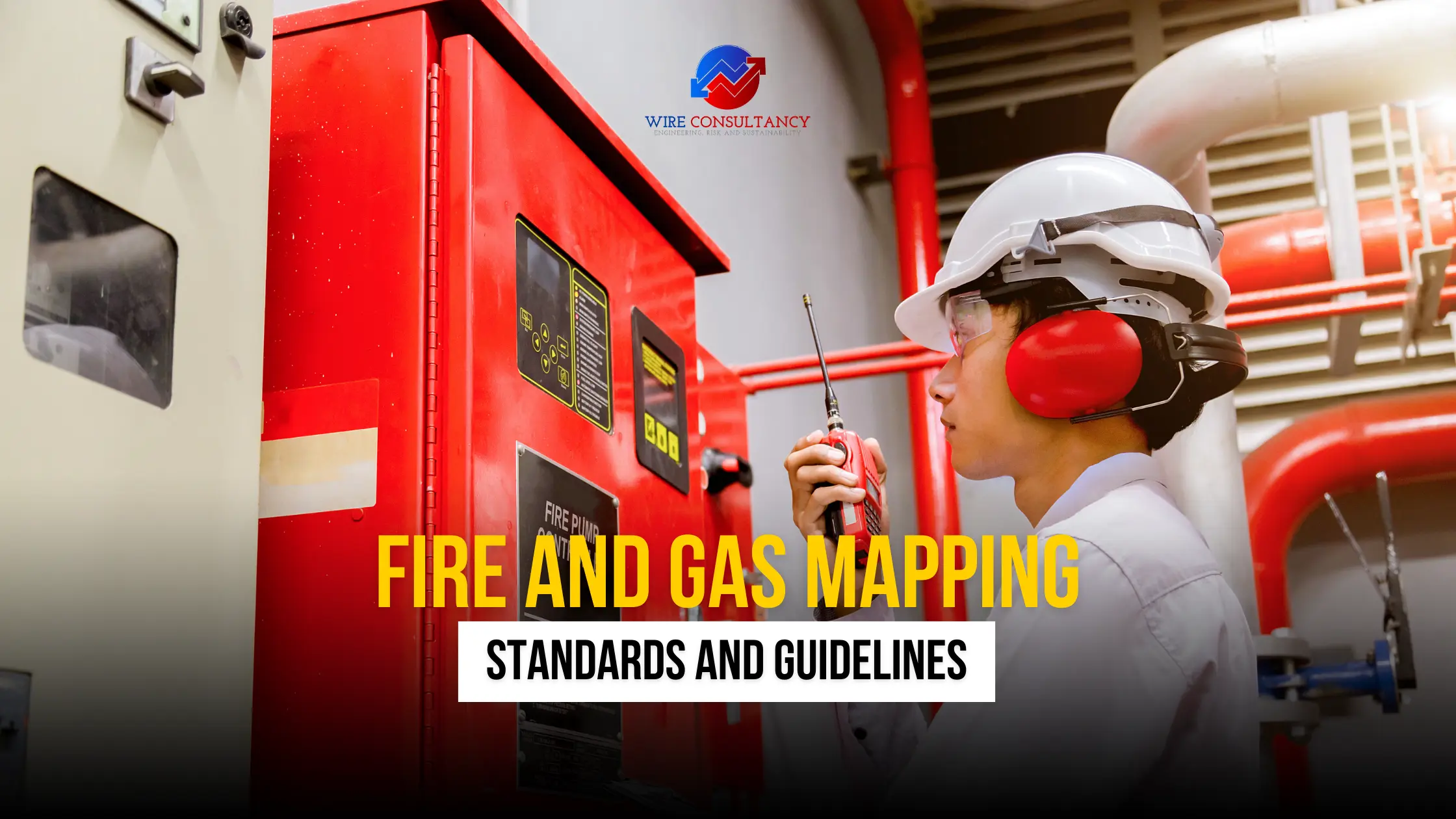
Understanding and implementing Fire and Gas Mapping standards and guidelines is instrumental in establishing a robust fire and gas mapping system, contributing significantly to overall industrial safety.
Overview of Fire and Gas Mapping Standards
Fire and Gas Mapping is governed by several industry standards and guidelines that provide a structured framework for the design, implementation, and maintenance of effective fire and gas detection systems. Organizations involved in fire and gas mapping should be familiar with these Fire and Gas Mapping standards to ensure the effectiveness of their safety systems. Here are some key standards:
NFPA 72: National Fire Alarm and Signaling Code
- Published by the National Fire Protection Association (NFPA), this standard provides guidelines for the installation, performance, testing, and maintenance of fire alarm systems.
API RP 14C: Recommended Practice for Analysis, Design, Installation, and Testing of Basic Surface Safety Systems for Offshore Production Platforms
- Developed by the American Petroleum Institute (API), this document offers guidance on the design and implementation of safety systems, including fire and gas detection, for offshore production platforms.
NFPA 72E: Standard for the Automatic Fire Detectors
- This NFPA standard focuses specifically on automatic fire detectors, including requirements for design, performance, testing, and maintenance.
BS EN 54: Fire detection and fire alarm systems
- The European Standard (EN) 54 series provides a comprehensive framework for fire detection and alarm systems, covering various aspects, including detectors, control and indicating equipment, and system design.
ISO 16530-1: Petroleum and natural gas industries — Well integrity standard — Part 1: Life cycle governance
- This ISO standard is part of a series that addresses well integrity in the petroleum and natural gas industries, including aspects related to fire and gas safety.
Implementation Guidelines for Optimal Safety
The implementation of Fire and Gas Mapping involves adhering to specific guidelines to ensure optimal safety. While the industry standards (such as NFPA 72, API RP 14C, BS EN 54, and ISO 16530-1) provide overarching principles, the following are common implementation guidelines that organizations typically follow:
Risk Assessment:
- Conduct a thorough risk assessment to identify potential fire and gas hazards in the facility.
- Prioritize identified risks based on severity and likelihood.
Zoning and Classification:
- Define hazardous zones within the facility based on the results of the risk assessment.
- Classify areas according to the types and levels of potential hazards.
Detection System Design:
- Design a fire and gas detection system that aligns with the facility’s layout, zoning, and hazard classification.
- Consider the types of detectors needed for different gases and types of fires.
Alarm and Notification:
- Establish clear alarm and notification procedures for different scenarios.
- Ensure that alarms are easily distinguishable, and notifications reach relevant personnel promptly.
Testing and Maintenance:
- Regularly test and maintain all fire and gas detection equipment.
- Develop a routine inspection schedule and conduct functional tests to ensure the system’s reliability.
Training and Emergency Response:
- Train personnel on the proper use of the fire and gas detection system.
- Develop and regularly practice emergency response procedures.
Documentation:
- Maintain comprehensive documentation, including design specifications, risk assessments, and maintenance records.
- Keep records of any changes or upgrades to the system.
Compliance with Standards:
- Ensure that the fire and gas mapping system complies with relevant industry standards and local regulations.
- Stay updated on changes to standards and incorporate them into the system as needed.
Continuous Improvement:
- Regularly review and update the fire and gas mapping system based on changes in the facility, technology, or regulations.
- Learn from incidents and near misses to enhance the effectiveness of the system.
Adhering to Fire and Gas Mapping standards, such as NFPA 72, API RP 14C, NFPA 72E, BS EN 54, and ISO 16530-1, is non-negotiable. These standards set the foundation for a robust fire and gas mapping system, providing a structured framework for implementation. It is through rigorous testing, compliance audits, continuous training, and integration with other safety measures that optimal safety is achieved.
